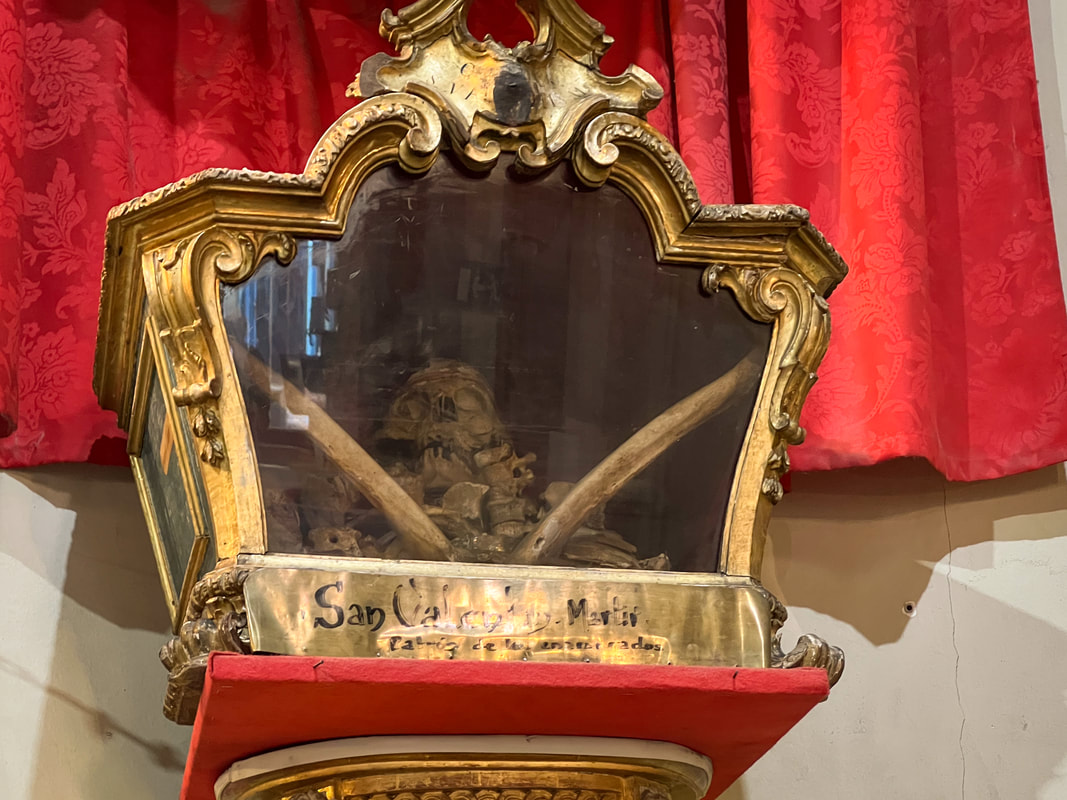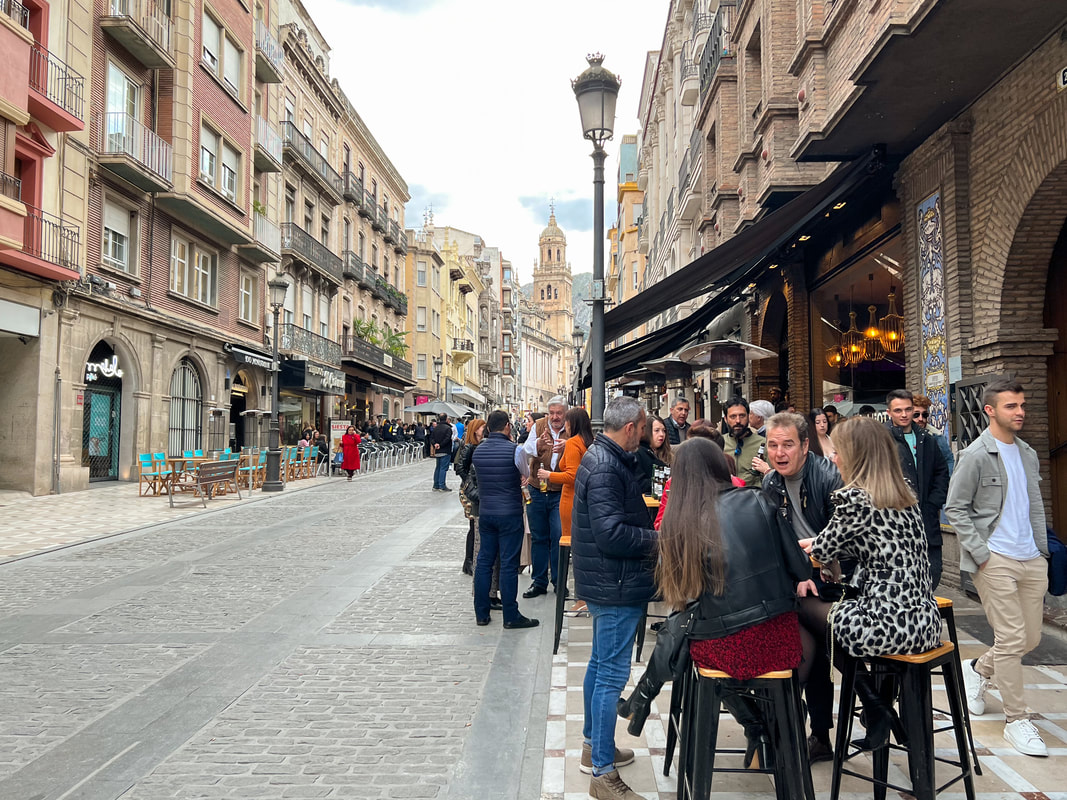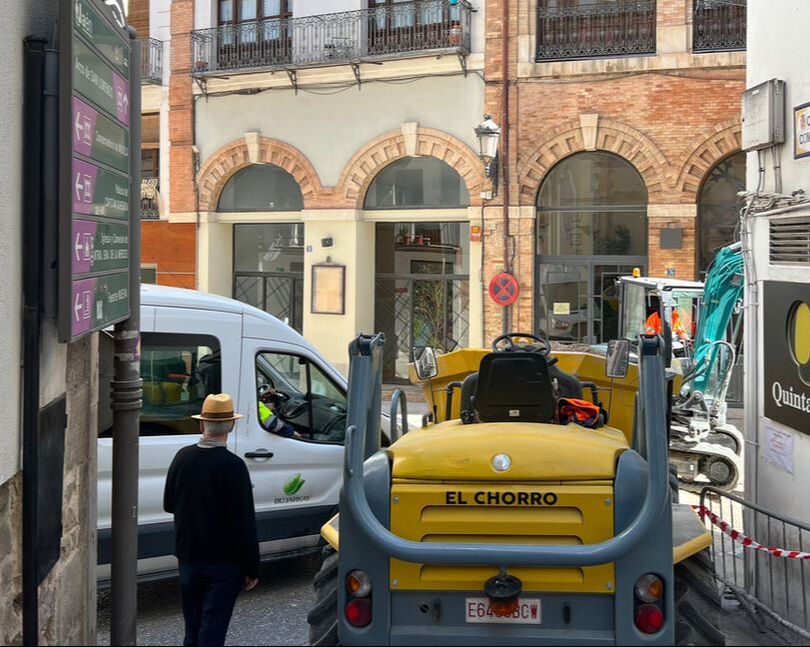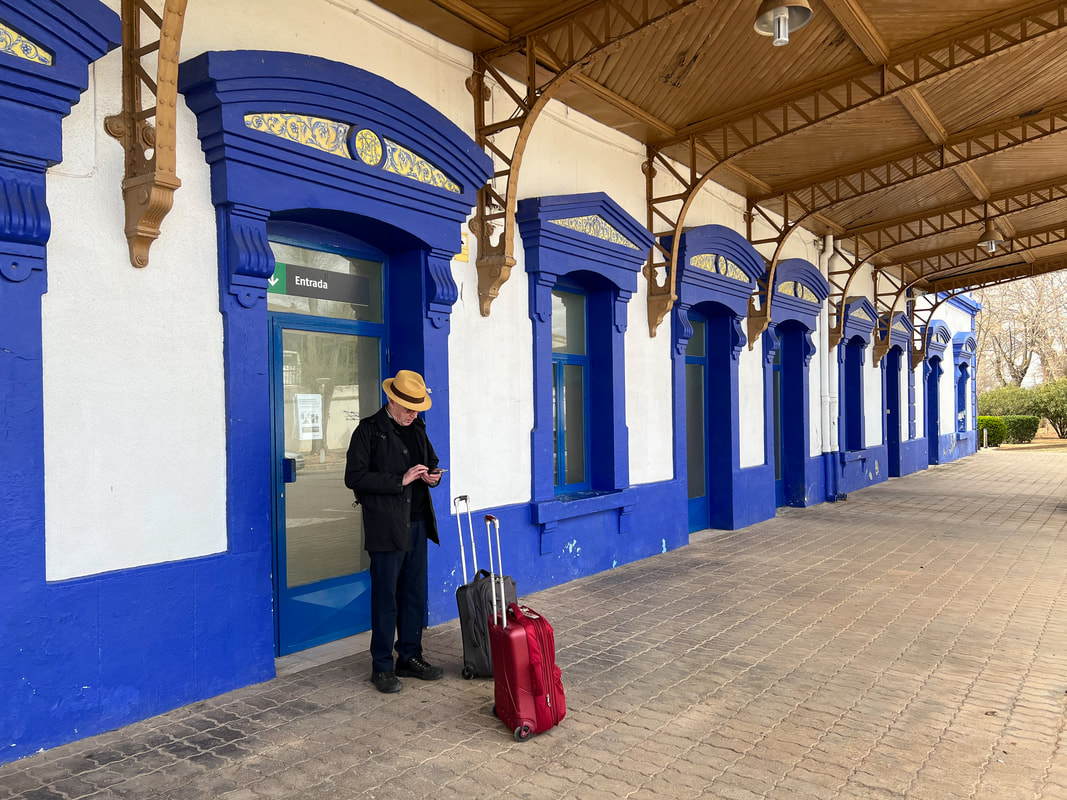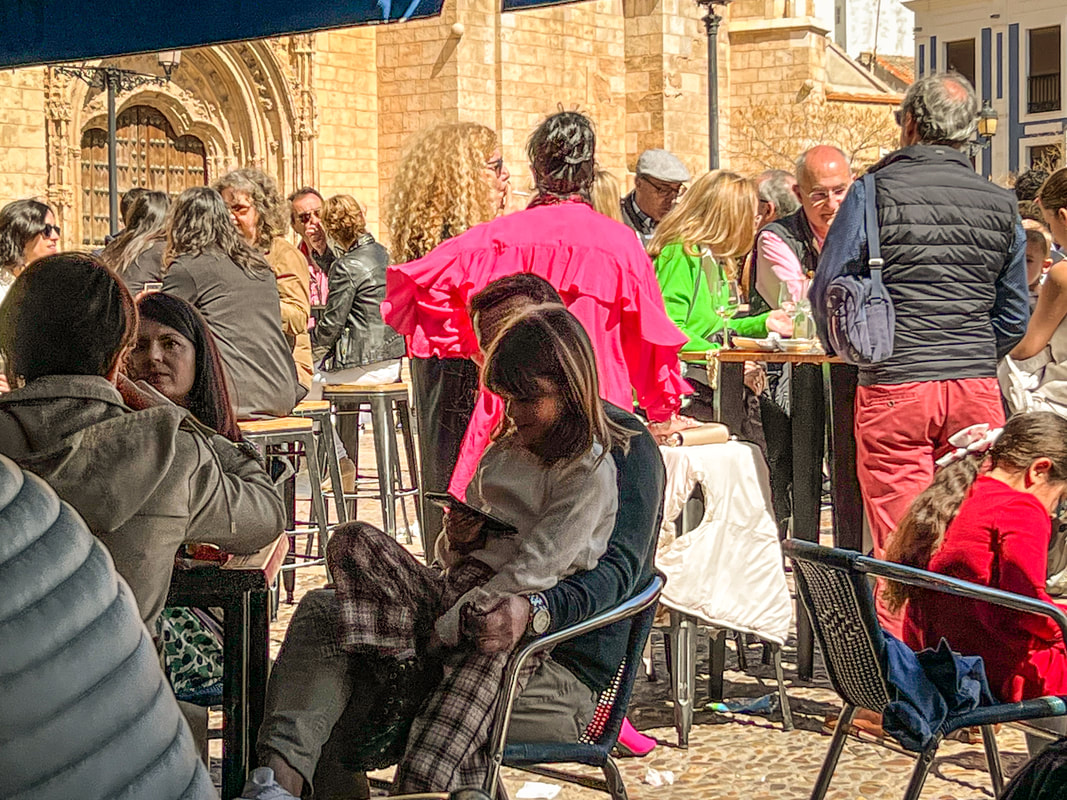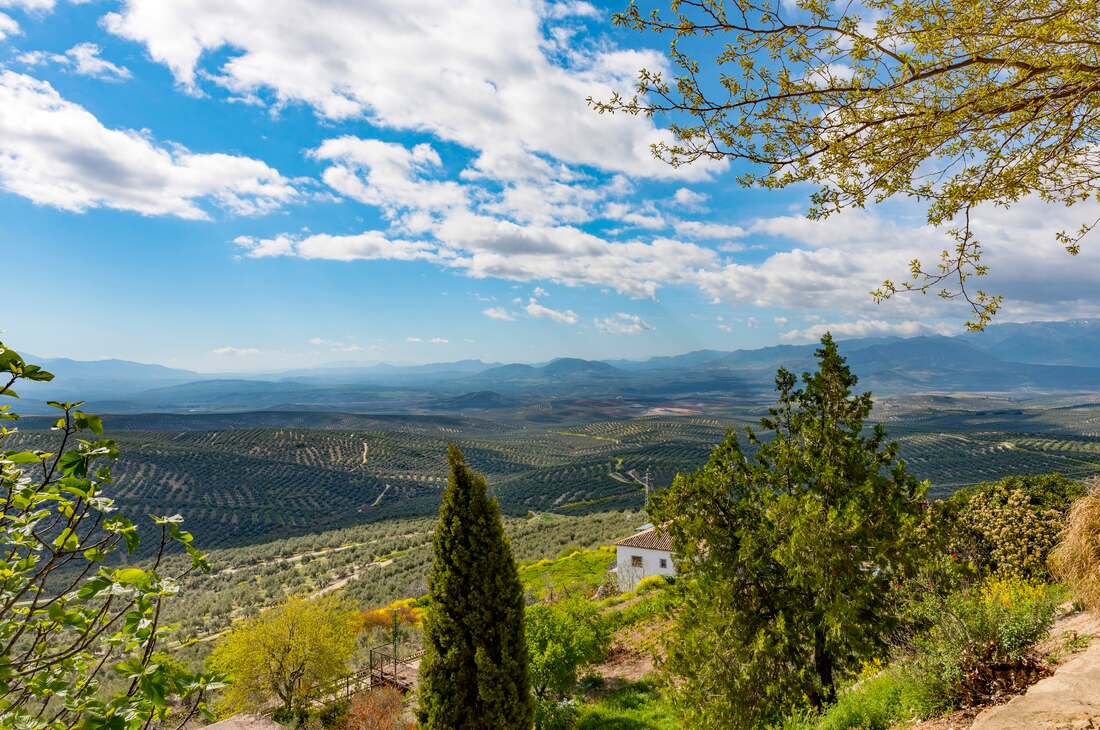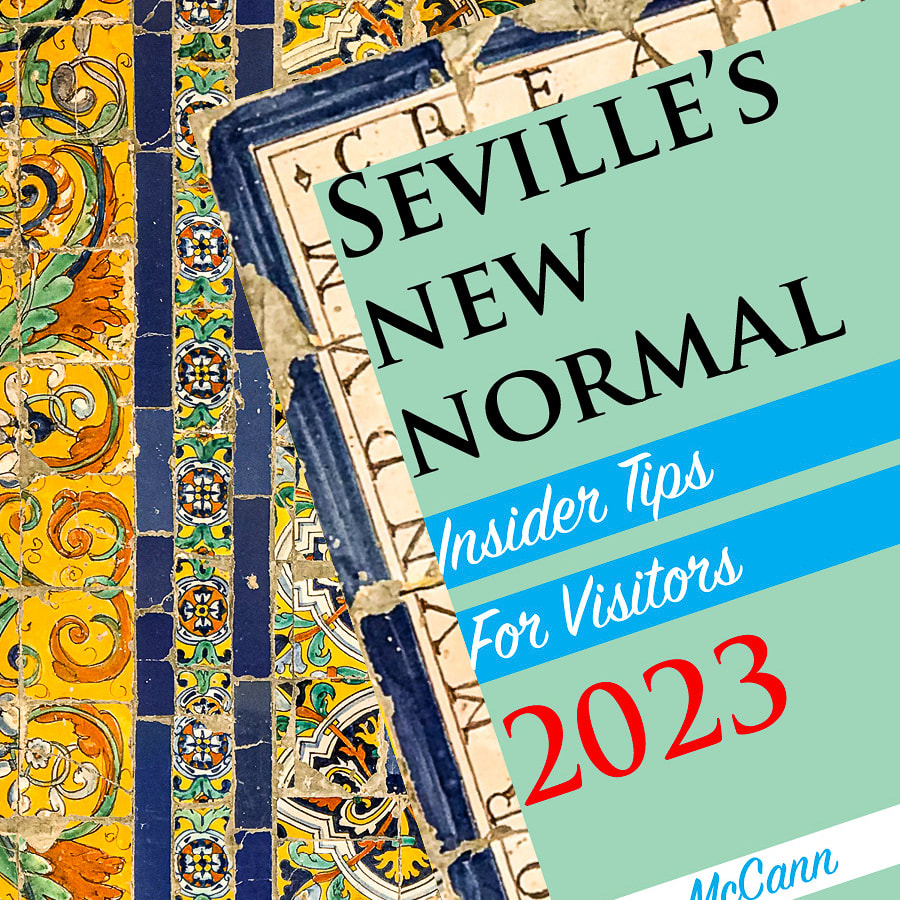|
“Lucy?” I asked. “Is that you?” As you’ve no doubt noticed, it’s never easy to tell one 3-million-year-old protohuman from another. Was this really the famous Lucy, the Australopithecus afarensis discovered in 1974 and named for a song by the Beatles? (For younger readers: that was Paul McCartney’s old band.) The skull itself wasn’t labeled, but the text next to it gave Lucy’s history, and I had the distinct impression I was intended to assume I was looking at her cranium. If I didn’t know her head and skeleton were in Ethiopia, I’d have been fooled. I managed to sidestep that error, but most days I find being fooled, perplexed, hornswoggled, and baffled is my default state on this Nutters Tour, and never more so than in Burgos. It began the moment Rich and I stepped off the train to discover the station was over four miles from town. (Why is it so inconveniently placed? Nobody could say.) The one taxi was seized by a spry fellow passenger who’d sprinted ahead. Luckily a kind passerby helped us catch the bus, and then it was just a matter of hiking up a hill so steep that long stretches of it had steps instead of sidewalk. “One more staircase,” Rich muttered toward the end, “and we’re going to abandon the bags.” Arriving at our building (with our bags), we then had to decipher elaborate high-tech entry instructions. These involved a computer link and a 300-word run-on sentence that — much as in Jaén last week — included everything except the actual apartment number. “Is it us?” I asked. “How does this keep happening?” I’ll spare you the details of the ensuing muddle, involving the wrong contact number, a disgruntled owner, and the harassed manager who provided detailed yet erroneous instructions. Suffice to say that in the fullness of time, we figured out how to disobey his directions and unlock the apartment door. I stepped inside, and my first glimpse of the view from our window left me breathless in a whole different way. I’d seen this cathedral once before, during a brief visit to Burgos many years ago. The city's landscape hadn't changed much except for the gigantic new Human Evolution Museum built to house astonishing fossils discovered in a nearby mountain. Archaeologists were particularly thrilled by a jawbone fragment dating back between 400,000 and 600,000 or possibly 850,000 years. For some reason, this was considered proof that humans had been in Europe for a million years. Now, math isn’t my strong suit, but doesn't that mean even the most optimistic estimate leaves us with a 150,000-year shortfall? Is it OK to simply round up like that? In science? Maddeningly, the museum didn’t explain any of this. There was an abundance of superfluous detail about the process of discovery but scant information about the actual finds. It was like being let loose in the laboratory of a mad scientist who expected you to piece together the ghoulish implications for yourself. After collecting the remains of saints, rulers, and warriors for more than a thousand years, Spain loves to put human body parts on display. It’s like living in a permanent state of Halloween. En route to Burgos, Rich and I made a brief stopover in Madrid, and when I discovered I was too late to get tickets to the exhibition featuring my favorite Spanish artist, Sorolla, I swallowed my disappointment and went to the next item on my must-see list: the bones of St. Valentine. I’d heard they were housed in a rather quirky inner city church. Quirky? The place was totally bonkers in such a wonderful way it made me wonder if the Universe really knew what it was doing that day. I wanted Sorolla tickets, but instead I got what I needed: a place where I could clearly see love made manifest in the world. That doesn't happen nearly often enough these days. Built in the 18th century as a leper hospital’s church, San Antón is now in the middle of Chueca, Madrid’s LGBTQ and hipster neighborhood. In 2015, after being closed for decades, San Antón was entrusted to Padre Ángel, the Catholic priest who co-founded the philanthropic Messengers of Peace in 1962. The priest (now 86) and his volunteers have transformed the Baroque church into a funky, free-wheeling community center that keeps its doors open 24/7. Hot meals are provided daily, pets are welcome, there’s a place to change your baby’s nappies, and pews are available for anyone who needs a warm, safe place to sleep. Mass is celebrated daily, and the confessionals have been replaced with counsellors providing advice and support. And on the wall, presiding over it all, are the bones of St. Valentine. His story begins in third-century Rome, when Emperor Claudius II decided his soldiers were neglecting their duties because they were too attached to their wives and families, so he banned marriage. The priest Valentine snuck around performing illegal weddings until he was caught and killed on February 14. He left a farewell note signed “Your Valentine,” little knowing his words would continue to be replicated on countless greeting cards nearly 2000 years later. Naysayers dispute many of the story’s details (OK, just about all of them) and point out the bones themselves are questionable. Remains of other St. Valentines are exhibited in Rome’s Basilica of Santa Maria in Cosmedin, in Dublin’s Whitefriar Street Carmelite Church, and elsewhere. But I like to believe he found his final resting place here, among the poor and marginalized who need a little extra love in their lives. San Antón is a hard act to follow, but I have to say that the Cathedral of St. Mary of Burgos was pretty stunning in its own way. This vast gothic structure, built to receive pilgrims hiking the Camino de Santiago, took centuries to build and embellish; each section has its own personality and in some cases, images that appear more pagan than Christian. I was particularly interested in the cathedral’s chapel of St. Tecla, a woman revered as an ancient feminist. Her story, which began circulating in a second-century text, reads like something from the National Enquirer. She ran away from home to follow St. Paul the Apostle, for which she was condemned to be burned at the stake, but a storm doused the flames. She reunited with Paul, cut off her hair, and began dressing as a man. Some nobleman tried to rape her, so she fought back — and was convicted of assaulting him. Officials threw her into an arena to be eaten by wild beasts, but the lionesses defended her from the other animals. She then leapt into a lake filled with aggressive seals that attempted to devour her but lightning killed the beasts, leaving her unscathed. And those are just the highlights. Today she’s honored around the world as the unofficial patron saint of women’s empowerment. In Spain, where her name happens to be the same as the word for “key” on a keyboard, she’s half-jokingly referred to as the patron saint of computers, too. Fascinated by her colorful history, I intended to learn more about her by visiting her shrine in the Burgos cathedral. Alas! St. Tecla's chapel was closed. (No explanation why.) I realized that travel is a lot like the Internet. It's colorful and exciting but filled with dubious facts, outdated information, outright fabrications, and stuff you just can't get to, like the Bar Paraiso, the Sorolla exhibit, and El Cid's left radial bone. I may still be able to catch up with St. Tecla, however. She's the patron saint of Tarragona, another town on our itinerary; their human towers are part of the celebrations of her feast day, which start with parading her arm through the streets. I can only hope it's the one with which she slugged the nobleman mentioned above. You can look forward to learning more about her adventures, and ours, as the Nutters Tour continues. WHERE ARE WE NOW? THAT WAS FUN. WANT MORE? Subscribe to receive notices when I publish my weekly posts. Just send me an email and I'll take it from there. [email protected] Curious? Enter any destination or topic in the search box below. If I've written about it, you'll find it.
12 Comments
Those who say GPS and Google have taken the mystery out of travel have clearly never visited Jaén, Spain. It’s a modern city with an old-fashioned attitude about sharing information: “If you live here you don’t need to ask, and if you don’t live here, you really don’t need to know.” Everything was shrouded in confusion. Take our lodgings, allegedly located at 23001 Bernabé Soriano Street near the cathedral. After a half hour’s laborious climb uphill from the train station, Rich and I arrived at Bernabé Soriano and saw the first street number was 2. Dear Lord, how many miles away was this place? What, me worry? In Spanish cities, every barrio is a village, so we asked the neighbors: the lady running the bakery, the guy at the health food store, the bouncer at an upscale bar, a dog walker named María Teresa, her friend, and her other friend Joaquin la Barba from the gastropub. Everyone tried to help, but we didn’t make real progress until Rich managed to get someone from booking.com on the phone. She found the correct, two-digit address, almost directly across the street from where we stood, and mentioned our landlady’s mother had been waiting out front for nearly two hours to let us in. Throughout all the muddle, everyone — including the landlady’s mother — remained remarkably cheerful, helpful, and kind. I was beginning to warm to this town. I asked our new friends about city’s famous ancient relic, the (alleged) Veil of Veronica, supposedly displayed every Friday in the cathedral at the top of our street. Nobody could provide details, but I wasn’t concerned because of course I could always ask at the tourist office. Imagine my surprise when I went there the next morning only to find the street under construction and the tourist office closed for the duration. “What is it with this town?” Rich said. “Isn’t it great?” I replied. “Everyone’s always complaining that Europe has become hopelessly touristy and there are no more authentic places left. Look at this city. Have you seen a single tourist since we got here? Have you heard anyone speaking English? This is the Spain we knew decades ago. Doing things its own way, not making everything slick and easy for visitors.” “No kidding,” he said. “If we manage to see Veronica’s Veil it’ll be a miracle.” Even without Veronica’s Veil there was plenty to see and do in Jaén. On Friday we arrived early at the cathedral and began asking where to find the nearby Church of the Sagrario in which the Veil apparently made its weekly appearance. We were misdirected to a chapel housing the crypt, the main cathedral entrance, and the former Convent of the Shoeless Carmelites with a famous 16th century statue of Jesus, but eventually we found the right spot. Doors wouldn’t open for another half hour, so we took a short walk. And that’s when I stumbled upon the absolute last thing I expected: a tourist office. And it was open. I went in, collected a map, and asked the woman at the desk about the city’s famous man-eating lizard. “Ah sí, el Legarto de Jaén.” She settled her hip more comfortable on the corner of the desk, leaning in. “This was long ago. There was a spring near the Church of the Magdalene; they said it lived there and came out to eat animals in the district. Some say humans, too.” She shrugged deprecatingly, and we both laughed. Yeah, that was pretty improbable. Not like the rest of the story. “They offered prisoners their freedom if they could kill it. One man volunteered. He threw pieces of bread on the ground to lure the beast downhill to the Church of San Ildefonso, where he had placed a lamb filled with explosives. The lizard ate the lamb and boom! He burst apart.” Problem solved! By now it was almost time for the Veil to appear, so we thanked her and hurried back to Sagrario church. Besides the sacristan, we were the only ones there. Then a woman came in and leaned over to ask me, “Are you here to make a confession?” As the veteran viewer of a thousand cop shows, I knew the only proper response was, “Not without my lawyer.” Instead I mentioned Veronica’s Veil and she nodded and sat down. Half a dozen more people trickled in. Music began to play and a priest emerged, singing, holding aloft a dark image of a man’s face surrounded by gold and emeralds. In a ceremony that was brief, lovely, and respectful, the priest placed the image on a table, prayed, and disappeared out a side door so we could all take photos without feeling sacrilegious. Was it the real deal? Very doubtful indeed. For a start, the story is tradition, not gospel; it dates back only to medieval times, when religious relics were big business. A legend began to circulate about Veronica using her veil to wipe the blood and sweat from Jesus’ brow while he carried his cross; his face appeared on the cloth, which now had miraculous powers. Today, there are so many known copies of Veronica’s Veil that the Church has come up with a name for them: vernicles. This one most likely dates back to the 14th century, which was venerable enough for me. As much fun as all this was, yesterday Rich and I left Jaén for the wine-making city of Valdepeñas. We arrived at a charming, old-fashioned railway station that was completely closed up. A sign announced “Sale of tickets is temporarily suspended.” An online search revealed this was moot anyway, as all Monday’s trains to Madrid were fully booked. “This is nuts!” Rich exclaimed. “My point exactly,” I said. He sighed. “Guess we’ll be taking the bus.” The saving grace of this town? Our apartment is directly above the colorful and convivial San Antonio restaurant, epicenter of everyone’s social life around here. Picture the bar scene in Star Wars mixed with My Big Fat Greek Wedding and you’ll have the general idea. We seemed to be the only non-Valdepeñans in the place. Off the tourist track? We can’t even see the beaten path from here. And did I mention this town is famous for its wine? I was diligent in my research. To sum up, the Nutters Tour is off to a roaring start, and I am re-learning the most valuable road lesson of all: embrace the chaos. We have very little control over anything in life, and that goes double when we’re travelers, relying on the friendliness of strangers. “I accept chaos,” said Bob Dylan. “I’m not sure whether it accepts me.” So far, I feel the chaos is doing a great job of embracing me back. 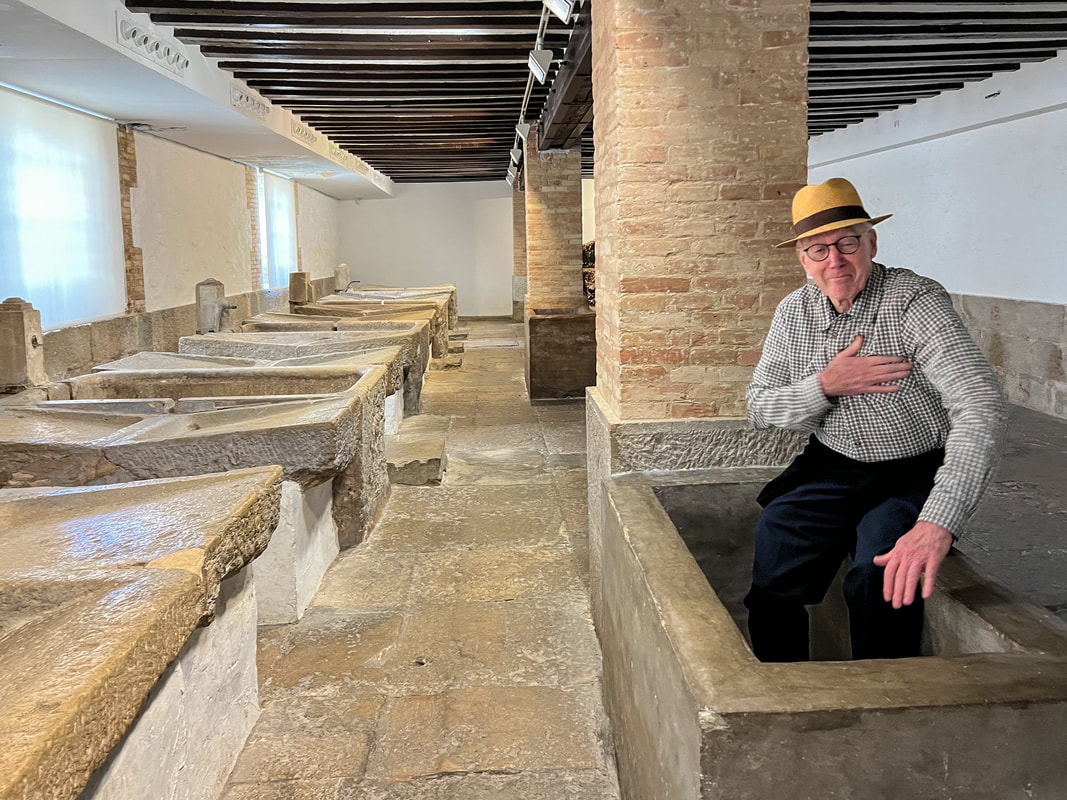 For Rich, one of the highlights of Jaén was visiting the Museum of Popular Arts & Culture and leaping into one of the old washtubs, pretending to take a bath. Seconds later a guard thundered down the stairs and read him the riot act. Rich felt like a kid again. "Gosh, Mr. Wilson, I didn't mean nothing by it!" SO EXACTLY WHERE ARE WE? THAT WAS FUN. WANT MORE? Subscribe to receive notices when I publish my weekly posts. Just send me an email and I'll take it from there. [email protected] Curious? Enter any destination or topic in the search box below. If I've written about it, you'll find it. Just watching the videos makes me weak in the knees. First the strongest men form a base and begin constructing the human tower. Then lithe, sinewy women clamber over them to build the higher levels. And finally, when everyone is in place and you can see their muscles trembling with effort, a little girl begins to ascend. She is the enxaneta, the crowning glory of the human tower, a child of seven to ten years who climbs over the adults to reach the top some forty feet in the air. Her only safety net: the bodies of her teammates below. “OK,” I said to Rich, “mark that down as another activity I am never taking up, right along with bungee jumping, bull fighting, and investing in cryptocurrency.” “You’d have to be nuts,” he agreed. I nodded happily and added Tarragona, home of the human tower since 1712, to my ever-expanding list of possibilities for our forthcoming Nutters Tour. What is a nutter? The term started out as a surname for someone who worked as a scribe (notare, in Latin), a profession not generally known for its screwball antics. Yet somehow, as it evolved into Middle English, the word became associated with eccentrics, risk-takers, and odd ducks. It embraces a broad spectrum of unconventional behavior, from the ancestor who first said, “Hey, maybe the animals we catch would taste better cooked” to folks who think forming a human tower sounds like fun. The history of the human race is rich with colorful, outside-the-box characters. Some — such as Leonardo da Vinci, Madam Curie, Steve Jobs, and Greta Thunberg — are household names, while others have gone unsung, their works long ago forgotten or continuing in quiet, Instagram-free obscurity today. The Nutters Tour is my chance to bring some of those zany nonconformists and their hometowns into the limelight. Spain is particularly blessed with eccentrics of all stripes, and I have been researching them for months — knowing that Rich and I will probably veer off frequently from our already loose itinerary. Possibly right out of the starting gate. We are beginning in the city of Jaén (pronounced Hi-YEN), and a Spanish friend, hearing about this Saturday at lunch, recommended a side trip from Jaén to the nearby historic town of Úbeda. Apparently there’s a common Spanish phrase “andar por los cerros de Úbeda” (literally 'to walk around the hills of Úbeda'), meaning “to go off at a tangent.” Could this be a sign from the Universe? Right now, all I really know for sure is that the Nutters Tour of Spain officially launches on Wednesday, and I’d be counting down the hours if only I had a few spare seconds or brain cells to devote to the task. Time is passing in a blur of laundry, last-minute purchases (why do I never have enough decent socks?), and farewell lunches, dinners, drinks, tapas, and coffees with friends. My apartment's back room is festooned with drying clothes, stacks of stuff I’m planning to bring on the trip, and scattered birdseed. The local songbirds, having ignored Rich’s birdfeeder for five and a half months, chose this week to realize those lumpy objects inside it were actually yummy avian comfort food. They are expressing their joy by flying in through the open window and holding parties all over the room. I’ll be shaking birdseed out of the creases of my clothes from here to Madrid. And speaking of my clothes, I know some of you are curious about what I’m packing, so here’s my list. Experience suggests that I can jam this much into my carry-on suitcase, and I’m pretty sure the layers will keep me comfortable during the variable spring weather and our eventual flight to California for the summer.
On Wednesday Rich and I will make the short rail journey to Jaén, world capital of olive oil, home to the (late unlamented) man-eating lizard and to the cathedral that houses the holy relic of Veronica’s Veil (likely a copy). As is so often the case with official Spanish websites, Jaén’s is a bit scanty, but the town's tourist office is no doubt standing by to help. I checked their website to see when they were open; this is what I found, word for word. - From 9:00 AM to 7:30 PM - From 10:00 AM to 3:00 PM From 5:00 PM to 7:00 PM - From 10:00 AM to 3:00 PM Sundays before public holidays: 10:00-15:00 and 17:00-19:00 Clear as mud. But of course, that’s the whole fun of exploring Spain. I’m from California, where every roadside attraction offers the fullest possible information online, bending over backward to avoid bad Yelp reviews. Spain doesn’t pay much attention to Yelp, or the needs of tourists. In fact, they make you work for every small nugget of information, adding a sense of triumph to each discovery. After Jaén and/or Úbeda, we'll likely head north by train to Valdepeñas, famous for its oddball wine combining white and red grapes, and for its strong women, including Juana Galán who rallied the town and held off Napoleon’s troops, allegedly smiting them with her cast-iron skillet. After that we’ll keep heading north by easy stages, stopping wherever we discover offbeat points of interest. One thing that may affect our route is the crowds. As you may have heard, post-pandemic pent-up demand has the tourist industry booming, and cash-strapped nations throughout Europe are going all out with creative ways to entice visitors. Seville is mobbed right now. And Rich and I won't have an easy time securing lodging in many of the cities on our tentative route. We're prepared to “andar por los cerros de Úbeda” and take whatever detours make sense and seem likely keep us — and our readers — entertained. I intend to post every week, but of course, that’s subject to the whims of wifi, Spanish train schedules, and the Universe’s quirky sense of humor. In the meantime, I’ll leave you with this delightfully goofy ad in which the Mona Lisa — and other familiar masterpieces — suddenly gain the capacity for speech. It's all created by Artificial Intellgence (robots) in service to Denmark’s visitor’s bureau. Enjoy! I thought you should know: No AI or ChatBots were used in creating this post. So what are your spring & summer travel plans? Here are tips and ideas you may find useful. Have specific travel questions? Type any destination or topic in the search box below. If I've written about it, you'll find info instantly. Don't miss out on a single loony story from the Nutters Tour!
If you haven't already subscribed, send me an email now. [email protected] |
This blog is a promotion-free zone.
As my regular readers know, I never get free or discounted goods or services for mentioning anything on this blog (or anywhere else). I only write about things I find interesting and/or useful. I'm an American travel writer living in California and Seville, Spain. I travel the world seeking eccentric people, quirky places, and outrageously delicious food so I can have the fun of writing about them here.
My current project is OUT TO LUNCH IN SAN FRANCISCO. Don't miss out! SIGN UP HERE to be notified when I publish new posts. Planning a trip?
Use the search box below to find out about other places I've written about. Winner of the 2023 Firebird Book Award for Travel
#1 Amazon Bestseller in Tourist Destinations, Travel Tips, Gastronomy Essays, and Senior Travel
BLOG ARCHIVES
July 2024
CATEGORIES
All
|


